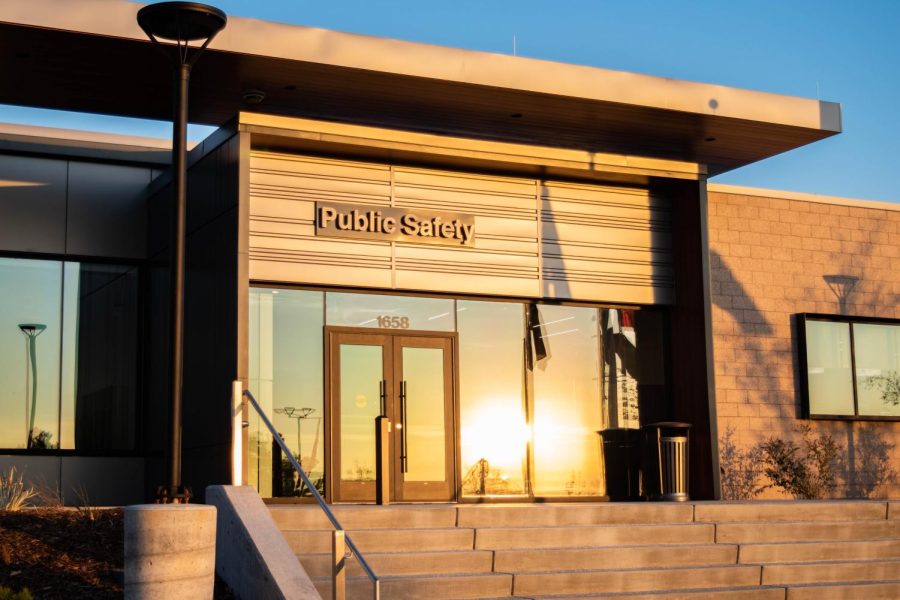Mendenhall: U Campus Safety Alerts Are Irresponsibly Delayed
The Department of Public Safety at the University of Utah, which opened to the public on Nov. 9, 2022. (Photo by Jack Gambassi on Nov. 22, 2022 | The Daily Utah Chronicle)
June 4, 2023
Campus security at the University of Utah has come under fire for many shortcomings regarding student safety over the last few years. Many day-to-day instances aren’t handled efficiently or in a timely manner. These include break-ins, sexual assault reports and possible threats of violence.
The biggest area for improvement for campus security is sending timely warnings in light of potentially dangerous and threatening situations.
Timely Warning System
The U’s Regulation Library states that the purpose of the campus’s timely warning system is to make us aware of unforeseen and emergent situations that may impact the health or safety of students and staff. Alerts are color-coded by threat importance: red equals emergency, orange is a safety warning and yellow is considered “general safety information.” Many factors, such as the nature of the incident and when and where it took place, are taken into consideration when determining if a crime constitutes a timely warning. Notice will then be “provided as soon as reasonably practical.”
But what’s considered practical? If my safety is at risk on campus, it’s reasonably practical for me to expect a warning within the first few minutes of a crime being reported. University Communications and other departments will determine how and when to best make a campus alert after getting the go-ahead from the Chief of Police and the Office of General Counsel. The U’s Public Safety webpage even states that, “On rare occasions, when every second counts, emergency messages will be sent via text to cell phones.”
While it’s true that some situations are more complicated and require steps prior to sending alerts, my main concern is safety. Knowing this, you’d think more timely action and communication would take place.
This is not really the case.
Bomb Threat and Sexual Assault Instances
In November 2022, the opinion desk and I were on campus for an event at the Union bowling alley. While there, we found out through a chain of friends that there was a potential bomb threat at the U Hospital. We left immediately and went elsewhere for our activity, still bound by fears of uncertainty. It took another 45 minutes before we received a campus alert of the bomb threat — this time from the U.
The campus alert stated that the report of the bomb threat was received at 3:12 p.m. The email alert shows a timestamp of 6:33 p.m. — a ridiculous delay. The alert was classified as orange, meaning it wasn’t considered urgent enough to send a “red alert.”
The Union is about a mile away from the U Hospital, where the bomb was reported to be. It terrifies me to know that an over three-hour delay is what the U considers a “timely warning,” especially if the threat had turned serious.
There are other instances, too. When I resided on campus, I got sexual assault alerts coming from a building next to my dorm. I didn’t question the alerts then, but now, I wonder if they could’ve had a delay like the bomb threat. This makes me feel not only extremely unsafe but like our campus security doesn’t care about the immediate well-being of students — and they have the track record to prove it.
Do Better, U
The U is well aware that they need to do better. Improving alerts will increase both trust and transparency because students and faculty must depend on the U for consistent and reliable communication.
Stuart Moffat, emergency management interim director, and Todd Justesen, public safety Clery Act compliance officer, were able to shed some light on how alerts are managed.
“If it’s a Clery call, then Todd takes over the facilitating of that incident management team … and he goes through his triage according to the rules that we follow from the federal government,” Moffat said. The process description, according to Moffat, is lengthy and passed through many individuals, meaning there’s less of an emphasis on urgency when sending an alert.
Ensuring that students and staff are kept in mind when making the decision for a “timely” alert needs to be at the forefront of our institution’s priorities. Regarding the bomb threat instance in November, Justesen said that it was classified as an “immediate ongoing threat to the campus community.”
“That’s why [the bomb threat report] was sent out as an immediate ongoing threat, it’s meant so you avoid or take action in order to not potentially be around the location,” Justesen said.
Students were not really given reason to worry about being in the vicinity of the threat, which raises red flags. Justesen said that this particular instance was more complicated with the threat taking place at the U Hospital. Still, we needed to know about the threat much sooner.
Unless we see change surrounding the protocol for emergency alerts, we can interpret the U’s lack of urgency in emergencies as an indicator of how much they care about students.








